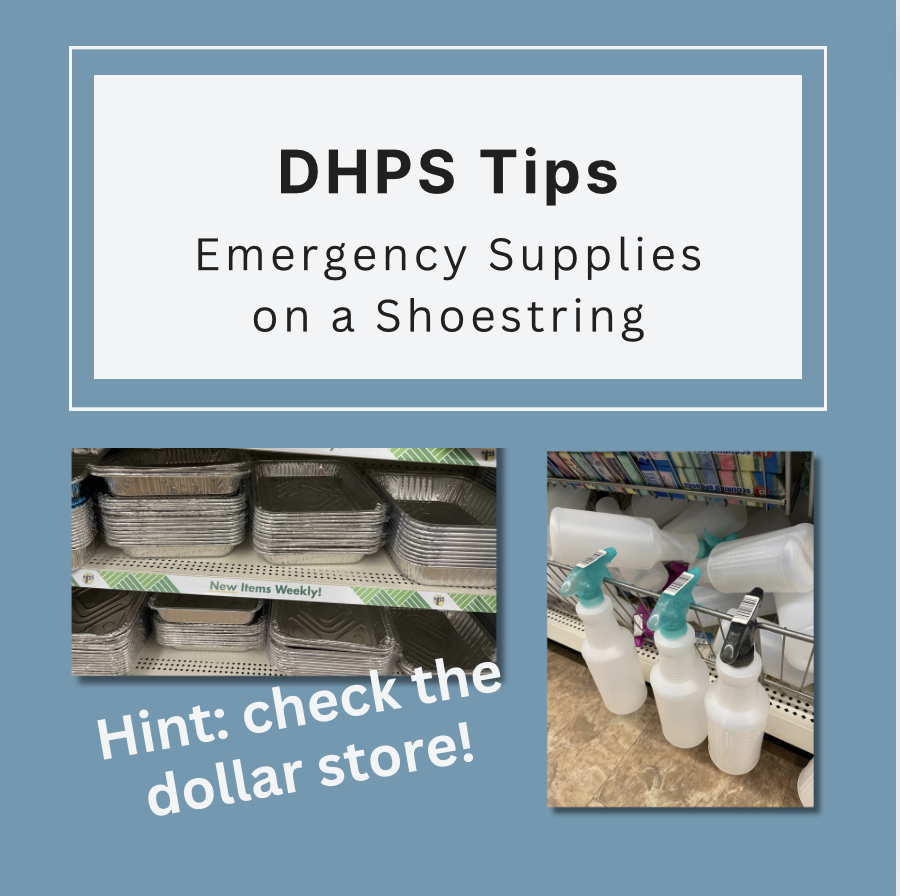
All collecting institutions should have some basic emergency supplies to deal with inevitable incidents such as roof leaks, burst pipes, fires, and storm damage. A reasonable question to ask is, how many supplies to have on hand? From the Conservation Center for Art & Historic Artifacts’ Emergency Supply Kits resource:
“Until an actual emergency, it can be difficult to determine how many supplies to have on hand. Based on the size and type of the collection, institutions should have enough supplies to fully handle a smaller emergency or to last the first 24 hours of a larger disaster until more supplies can be shipped.”
Fortunately, following this guidance doesn't have to be costly. While shopping for the DHPSNY salvage workshop supplies at a local dollar store, it occurred to us how many useful items were available there. Whether you are collecting things for your institution’s emergency supply kits or need to grab things on short notice to deal with an incident, a dollar store is a useful resource. All of these items are readily available at big box/hardware stores and online as well.
PPE
Using personal protective equipment is critical when responding to a collections disaster or salvage work. From various types of gloves to safety goggles and disposable aprons, you can find some PPE supplies at a dollar store. While nitrile gloves are recommended for object handling, having other types on hand for cleanup tasks can be useful. Note that for masks and respirators, it’s best to find a reputable source to ensure they meet required standards.
DOCUMENTING
From documenting the scope of an incident to logging information about affected objects, documentation happens at all points during a collections incident response. Especially if you are working without power or in conditions unsuitable to bring a laptop, this may have to happen manually. Find notebooks, pencils (always a priority when working around collections), and other documenting supplies at a dollar store.

PREVENTING FURTHER DAMAGE
Tarps can be used to cover shelves or exhibit spaces to prevent further water damage or as a surface to lay out objects to air dry. Some dollar stores may carry plastic sheeting – also useful for both these things – or shower curtain liners can be substituted. Duct tape is helpful to secure tarps or sheeting.
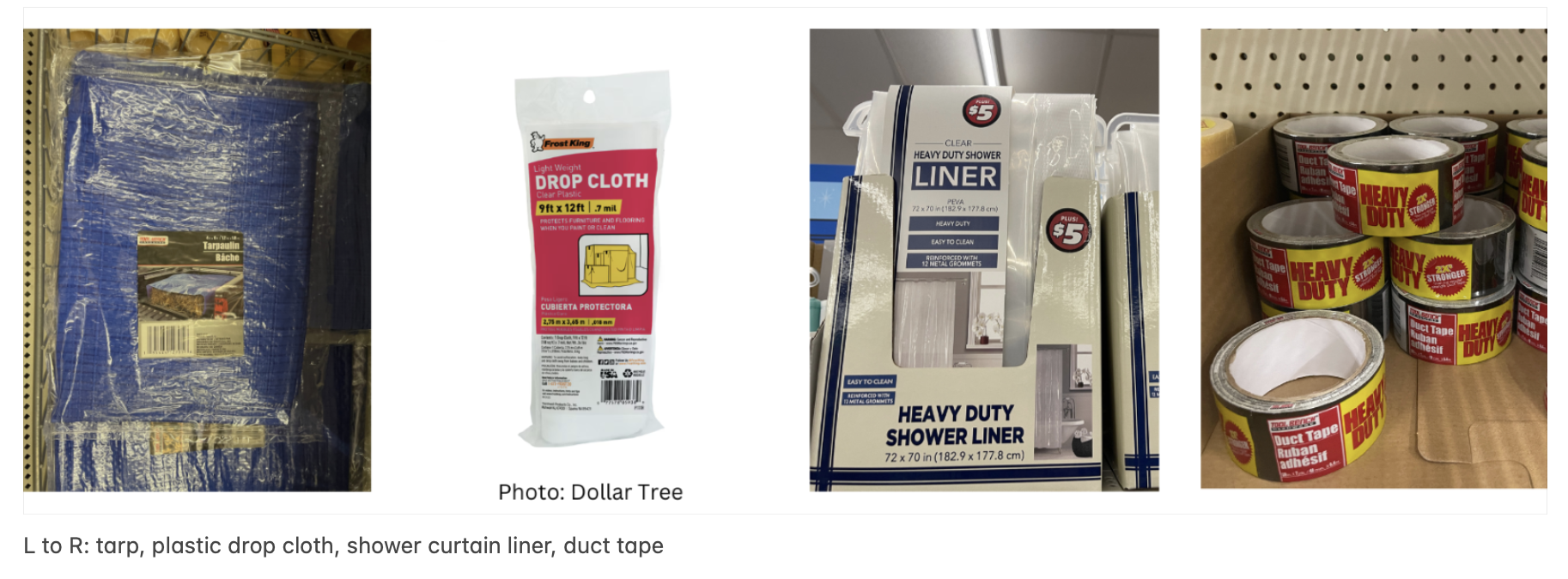
OBJECT RETRIEVAL
Wet objects being transported from the incident site to where they will be dried need support. Various dollar store items can be used for this: baking sheets, disposable baking dishes, cutting boards, or clipboards.
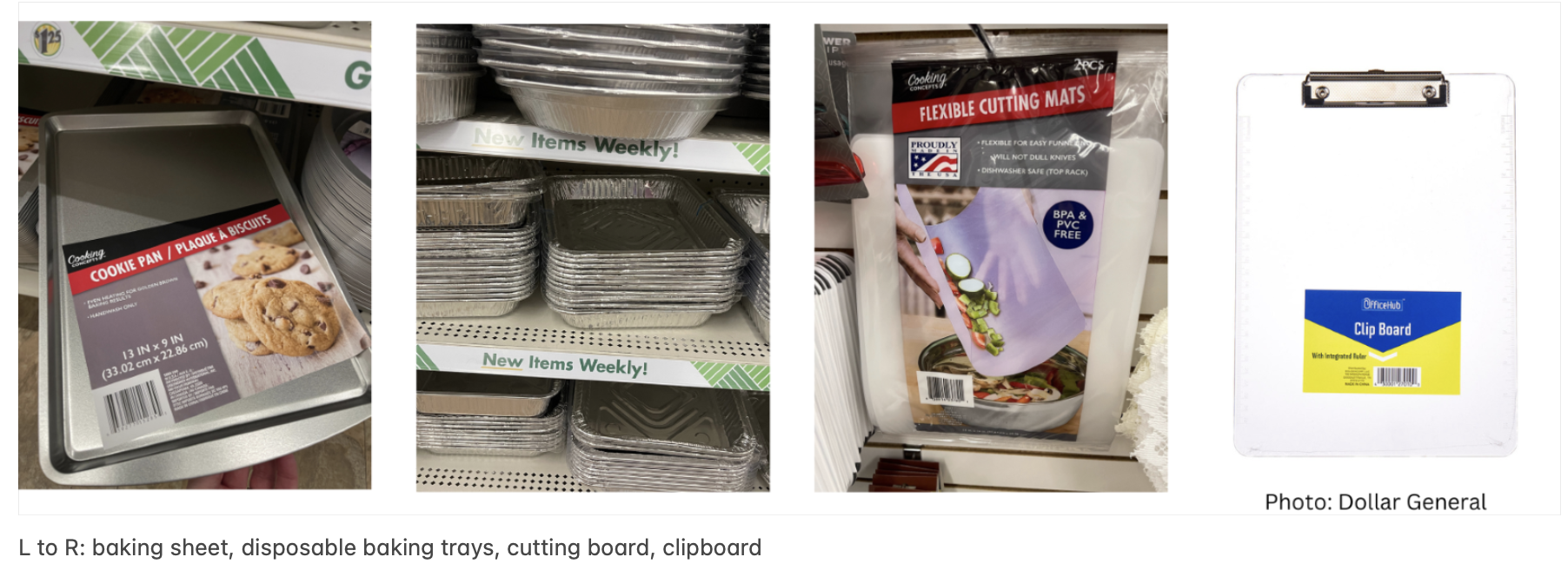
RINSING
If objects are dirty as they are removed from the incident site, they should be rinsed before air drying or being packed for freezing. Rinsing stations can be made from buckets or bins with pitchers and spray bottles, all available from a dollar store. Distilled water is preferable for rinsing, if available (but tap water will suffice).

TRIAGE
Triage is the part of salvage where staff determines what to do with wet objects: air dry or pack for freezing. Having lots of table space and absorbent materials is the first step in getting items dried out. The dollar store can be a source for paper towels, regular towels, absorbent puppy pads, and wax paper used for interleaving before freezing.
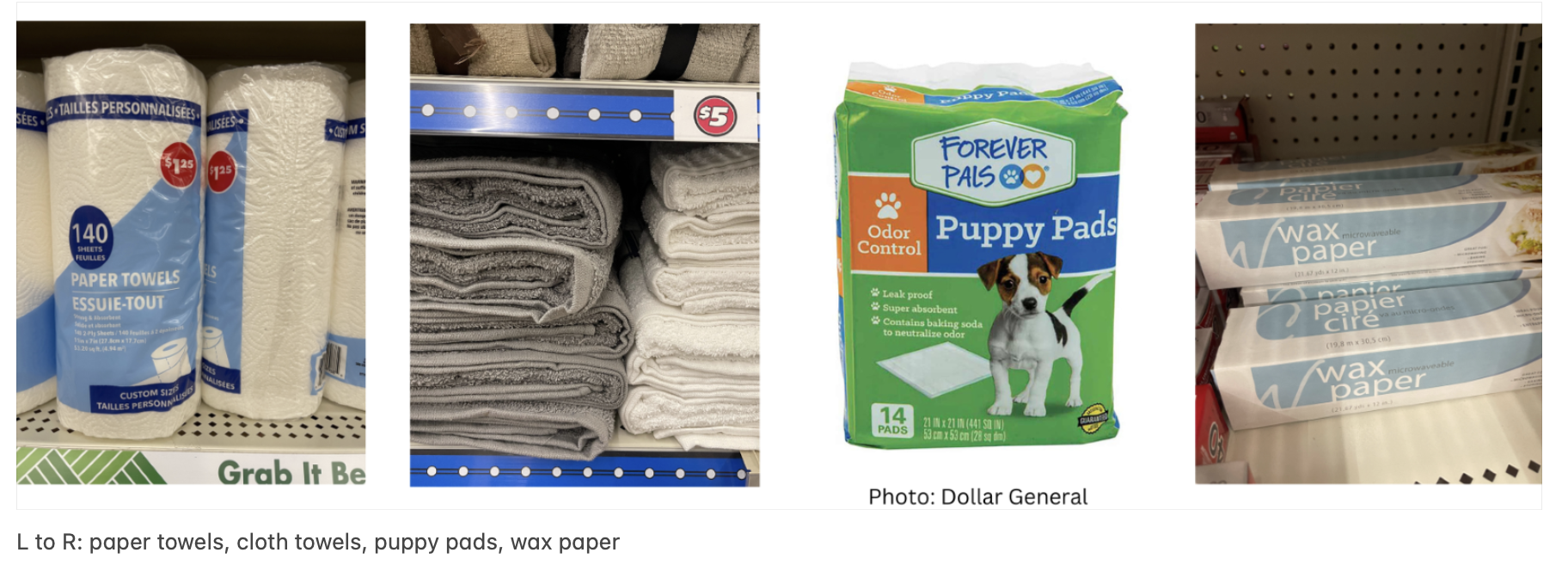
HANGING DRY
Sturdy items can be hung on a clothesline to air dry to save table space. A dollar store will have both the line and clothespins. Removable hooks help in stringing clotheslines in various spaces. Use small pieces of nonstick paper such as parchment paper to protect hanging objects from the clothespins.
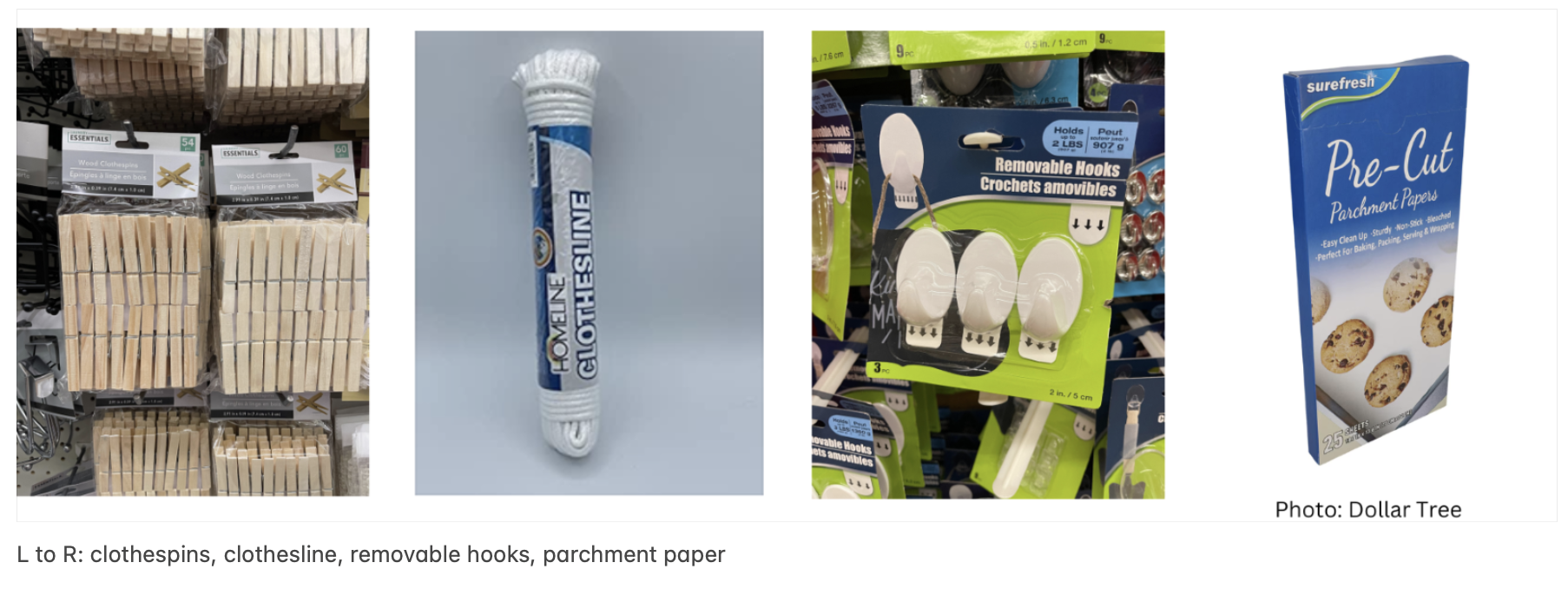
OTHER TOOLS
A dollar store has lots of other items that are useful in an emergency supply kit. Flashlights and headlamps may be a necessity for assessing a situation or even doing salvage work in the dark when the electricity is out. Extension cords will always come in handy when there are extra lights, fans, or dehumidifiers to be set out. Even box fans may be seasonally available.
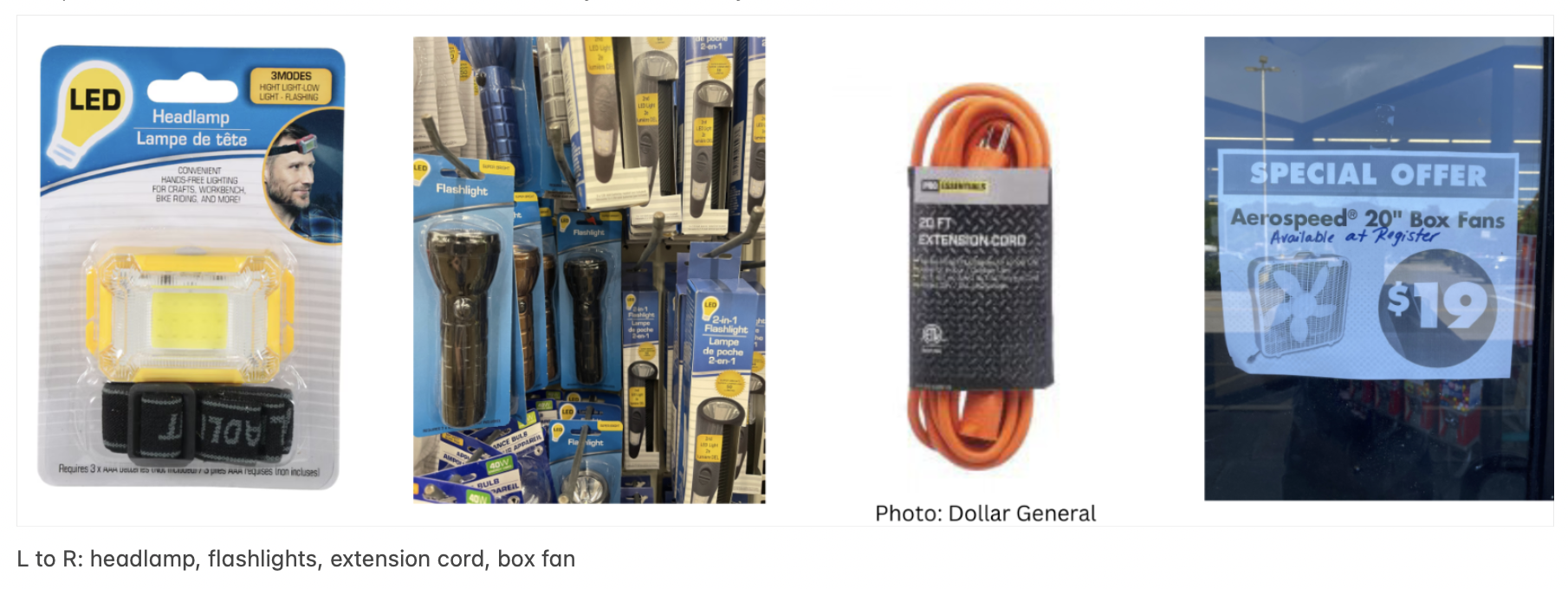
Doorstoppers will be invaluable in keeping pathways open when moving impacted collections to safer locations. Utility knives and batteries are basics to have on hand all the time. And from the dollar store craft section, micro spatulas can be used for delicate salvage work.
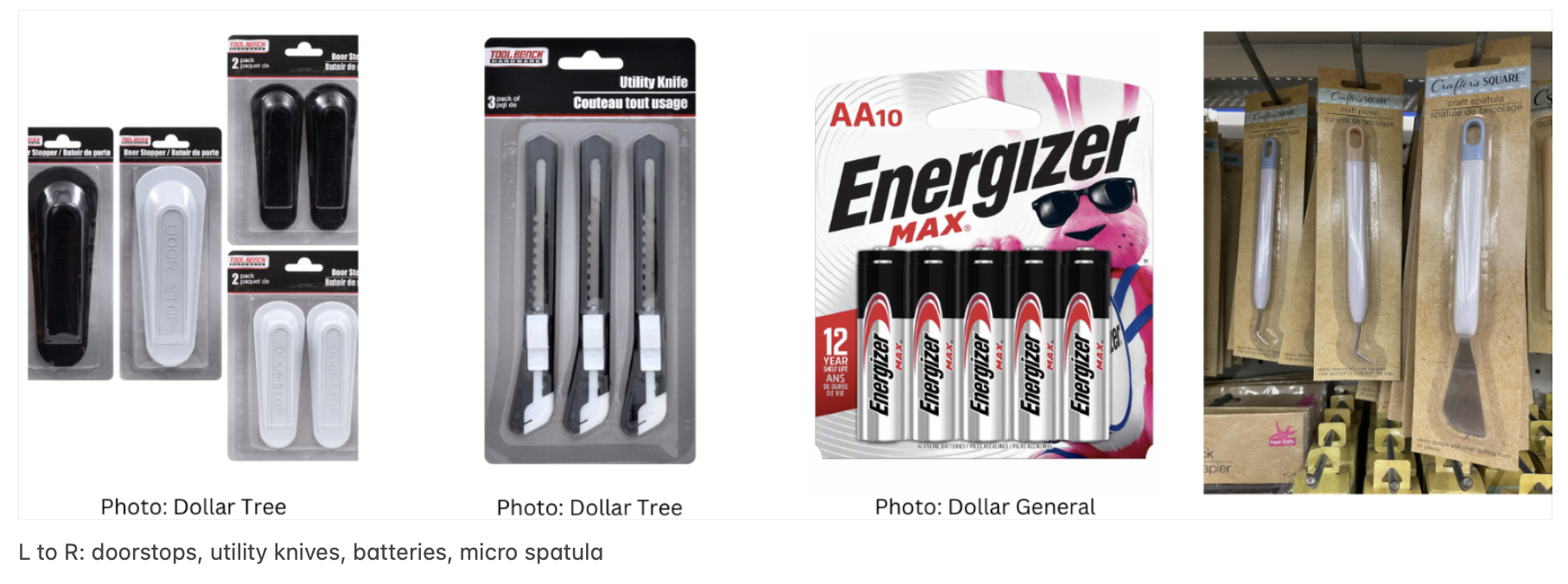
CLEANING
Once collections salvage work is completed, there likely will be general clean up that needs to happen after an incident. A dollar store is a good resource for these kinds of supplies: trash bags, buckets, mops, squeegees, sponges, and more.
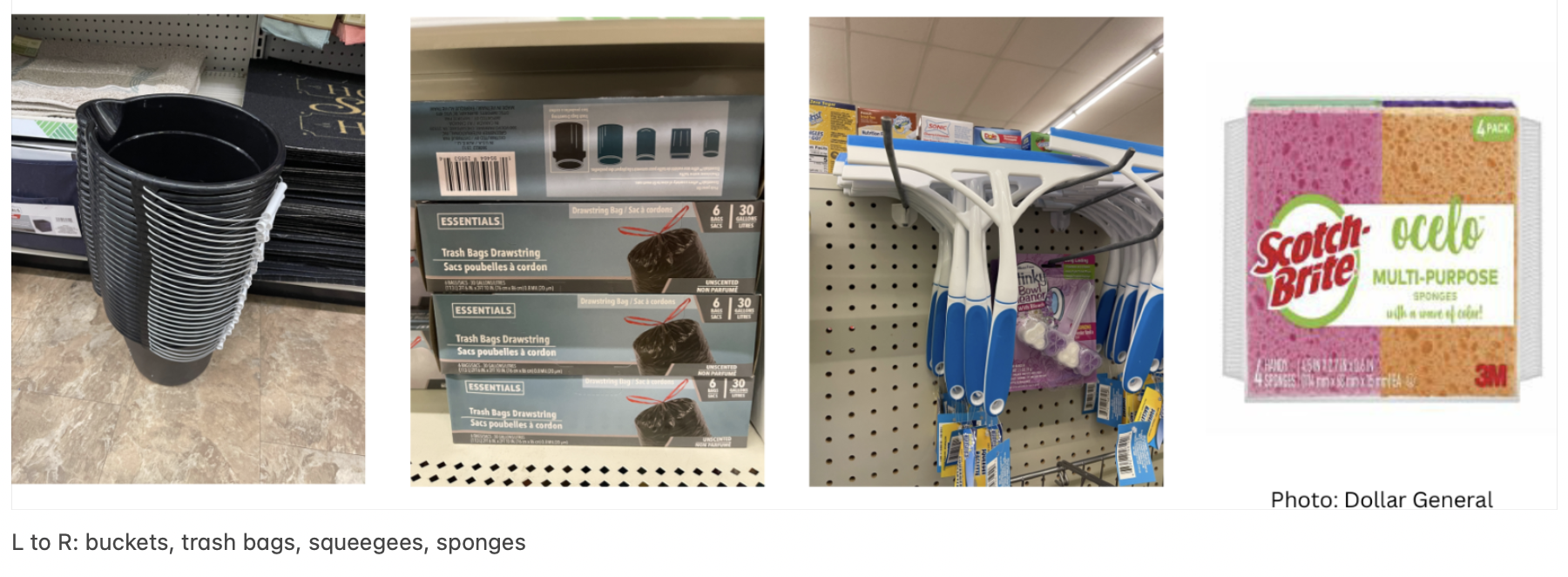
Wherever emergency supplies are procured, ensure they are stored in appropriate locations near the collections, well-marked for emergency use only, and reviewed annually. For more information on gathering emergency supplies, check out the following resources.
Emergency Supply Program Development Manual, Association of Registrars and Collections Specialists
Pan-Institutional Collections Emergency Kit Survey, Smithsonian National Collections Program
Collections Emergency Kits, Foundation for Advancement in Conservation Connecting to Collections Care
Do you have a preservation topic, question, or creative solution you would like us to cover in this series? Reach us by email at info@DHPSNY.org, or connect with us on the DHPSNY Facebook page or DHPSNY Community Facebook Group.
